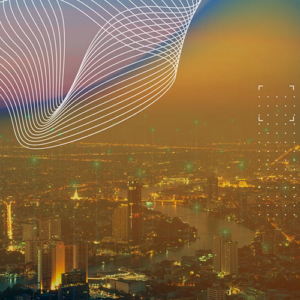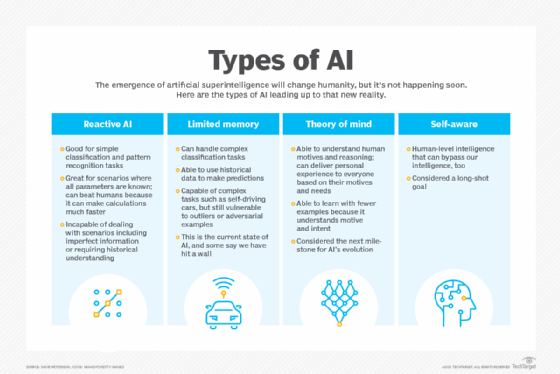Prysmian – Metaverse and telecom industry: what’s the link?
 What is the metaverse and what’s in it for the telecom industry?
What is the metaverse and what’s in it for the telecom industry?
The term metaverse was conceived in 1992 by Neal Stephenson in his novel “Snow Crash”, belonging to the cyberpunk literary genre that is centered on technological developments. This term, metaverse, became extremely popular lately when Mark Zuckerberg decided to use it to start a new project with his group, Meta.
What you will find in this article
- The definition of metaverse
- How to access the metaverse
- New frontiers for the telecom industry
- Advertising and communication
- Laws and regulations
- Risks of the Mateaverse
What is the metaverse?
The metaverse is an Internet evolution, but it does not replace it. We are talking about a digital space, where everything is made of data and information; it is a structure with its own length, width, depth, and time called cyberspace. Yet, there is a strong connection between the material world and the metaverse. The future seems to hold a digital world and a material world that are connected one another through technologies and that influence and shape each other.
How to access and experience the metaverse
The metaverse is a digital universe that takes root from many technologies including video, augmented reality and virtual reality; to access the metaverse you need technological support such as a smartphone, computer or console and a 3D visor that will allow you to live authentic virtual experiences.
To do that, you have to create a realistic avatar that will allow you to interact with other people – avatars – and do any sort of activity. For example, you can have a meeting with your coworkers in a virtual room, you can go shopping at the mall, go to concerts or sport’s games, but you can also travel to different places.
New perspectives for the telecom industry
The metaverse represents both a challenge and an opportunity for the telecom industry: it’s not just an infrastructure, but it’s also an economic and strategic asset for telecom industries that choose to take part in it.
Data is central in the development of the metaverse and there will be an increasing demand for it. Technologies required to access the metaverse, such as VR, need five to 40 times more bitrate than it takes to stream an HD video. Network infrastructures need to be fast and efficient in the metaverse era in order to assure customers a satisfying experience. And this is where telecom businesses can make a difference: they have to develop enabling technologies that will make it easier for users to access and navigate the metaverse, starting from fast infrastructure, to Artificial Intelligence (AI).
Laws and regulations on the metaverse
The metaverse cannot realistically replace real life, but it could generate a hybrid solution: parts of our day could take place in the material world, others in the digital one. If that’s going to happen, it’s important to be aware of the main risks we could be facing in the future.
It’s important to notice that there are still no laws or directives concerning crimes and behaviors in the metaverse. It’s not even clear yet which is the unit that should be held responsible for matters related to digital life such as fraud and cyber-attacks.
What are the main risks we take entering the metaverse?
The main risks related to the metaverse, at least for now, are:
- Individual identity: the metaverse is centered on the idea of a virtual identity – avatars – that represents each individual. Every person would move through the digital word through an avatar, but there is still no theory on how to prevent digital identity theft.
- Privacy and data security: there are no clear directives on how to protect data and how to react to an eventual crime.
- Intellectual property: copyright and intellectual property are going to be central in the development of the metaverse and, even though there have been some implementations regarding blockchain and NTFs, we are still far from a clear regulation.
- Security issues technology related: technologies required to access and live in the metaverse have their own security issues in terms of data.
A clear set of laws and a dedicated unit are essential to make the metaverse a place as safe as possible. But it’s also important to educate and raise awareness in every potential user to build a common consciousness and shared best practices.
Source
Prysmian Group
EMR Analysis
More information on Prysmian: See the full profile on EMR Executive Services
More information on Valerio Battista (Group Chief Executive Officer, Prysmian Group until the 2024 Annual General Meeting (April)): See the full profile on EMR Executive Services
More information on Massimo Battaini (Group Chief Operating Officer and Executive Director, Prysmian Group + Proposed Candidate as CEO at the 2024 Annual General Meeting (April)): See the full profile on EMR Executive Services
More information on Neal Stephenson (Author): https://www.nealstephenson.com/ + https://www.linkedin.com/company/lamina1/
More information on Meta: https://www.meta.com/ch/en/ + Meta builds technologies that help people connect, find communities, and grow businesses.
When Facebook launched in 2004, it changed the way people connect. Apps like Messenger, Instagram and WhatsApp further empowered billions around the world. Now, Meta is moving beyond 2D screens toward immersive experiences like augmented and virtual reality to help build the next evolution in social technology. We want to give people the power to build community and bring the world closer together. To do that, we ask that you help create a safe and respectful online space. These community values encourage constructive conversations.
Our mission: Giving people the power to build community and bring the world closer together
Our products empower more than three billion people around the world to share ideas and offer support.
More information on Mark Zuckerberg (CEO, Facebook): https://about.meta.com/uk/media-gallery/executives/mark-zuckerberg/ + https://www.linkedin.com/in/mark-zuckerberg-618bba58/
EMR Additional Notes:
- Metaverse:
- The first use of the term ‘metaverse’ was in the 1992 science fiction novel “Snow Crash”, by Neal Stephenson, which described a single virtual world separate from the physical world.
- In the broadest terms, the metaverse is understood as a graphically rich virtual space, with some degree of verisimilitude, where people can work, play, shop, socialize — in short, do the things humans like to do together in real life (or, perhaps more to the point, on the internet).
- The technologies companies refer to when they talk about “the metaverse” can include virtual reality—characterized by persistent virtual worlds that continue to exist even when you’re not playing—as well as augmented reality that combines aspects of the digital and physical worlds.
- Basically, a place parallel to the physical world, where you spend your digital life. A place where you and other people have an avatar, and you interact with them through their avatars.
- The Metaverse represents a highly interactive three-dimensional virtual world. Like the real world, users can trade land, buildings, and other digital assets in the Metaverse and explore the space using their personalized avatars.
- Examples: Hyundai Motor Company debuted Hyundai Mobility Adventure, a metaverse experience on gaming platform Roblox. Gamers’ avatars can experience Hyundai future mobility projects and current products. And last year, Warner Bros. Pictures hosted a virtual party on Roblox to market its movie In the Heights.
- Bloomberg Intelligence tells us that the value of the metaverse is expected to reach $800 billion by the middle 2020s with that figure climbing to $2.5 trillion by 2030.
- Following Meta, the metaverse is the next evolution in social connection and the successor to the mobile Internet.
- Industrial Metaverse:
- The industrial metaverse is a network of digital twins that links physical assets and the digital world. It enables manufacturers to connect their digital twins with their customers and suppliers so they can work together and get insights based on real time data.
- On one side, we have Industry 4.0 (Industrial IoT or IIoT) which has been gathering data from equipment and environments for many years. This data is increasingly stored in the cloud and accessed through an off-the-shelf IoT provider, such as Amazon’s AWS or Microsoft’s Azure. On the other side, we have the 3D world of gaming technology, augmented/virtual/mixed realities, and CAD. Combining the two leads to an immersive environment where IoT data can be accessed in new and innovative ways.
- Digital worlds based on real-time data will allow corporations to have multiple iterations and simulations of themselves. Lessons learned and breakthroughs discovered in the Industrial Metaverse will provide feedback into reality, enabling companies to change real-world parameters to optimise everything!
- The Industrial Metaverse is “basically” a Digital Twin
- Simulations in a metaverse environment could allow manufacturers to test thousands of potential scenarios for their ecosystems to explore different strategies.
- VR/AR/ER (Virtual Reality/Augmented Reality/Extended Reality):
- Augmented reality (AR) adds digital elements to a live view often by using the camera on a smartphone. Examples of augmented reality experiences include Snapchat lenses and the game Pokemon Go. Virtual reality (VR) implies a complete immersion experience that shuts out the physical world.
- AR uses a real-world setting while VR is completely virtual. AR users can control their presence in the real world; VR users are controlled by the system. VR requires a headset device, but AR can be accessed with a smartphone. AR enhances both the virtual and real world while VR only enhances a fictional reality.
- Extended Reality (XR) is an umbrella term encapsulating Augmented Reality (AR), Virtual Reality (VR), Mixed Reality (MR), and everything in between. Although AR and VR offer a wide range of revolutionary experiences, the same underlying technologies are powering XR.
- AI – Artificial Intelligence:
- https://searchenterpriseai.techtarget.com/definition/AI-Artificial-Intelligence +
- Artificial intelligence is the simulation of human intelligence processes by machines, especially computer systems. Specific applications of AI include expert systems, natural language processing, speech recognition and machine vision.
- As the hype around AI has accelerated, vendors have been scrambling to promote how their products and services use AI. Often what they refer to as AI is simply one component of AI, such as machine learning. AI requires a foundation of specialized hardware and software for writing and training machine learning algorithms. No one programming language is synonymous with AI, but a few, including Python, R and Java, are popular.
- In general, AI systems work by ingesting large amounts of labeled training data, analyzing the data for correlations and patterns, and using these patterns to make predictions about future states. In this way, a chatbot that is fed examples of text chats can learn to produce lifelike exchanges with people, or an image recognition tool can learn to identify and describe objects in images by reviewing millions of examples.
- AI programming focuses on three cognitive skills: learning, reasoning and self-correction.
- What are the 4 types of artificial intelligence?
- Type 1: Reactive machines. These AI systems have no memory and are task specific. An example is Deep Blue, the IBM chess program that beat Garry Kasparov in the 1990s. Deep Blue can identify pieces on the chessboard and make predictions, but because it has no memory, it cannot use past experiences to inform future ones.
- Type 2: Limited memory. These AI systems have memory, so they can use past experiences to inform future decisions. Some of the decision-making functions in self-driving cars are designed this way.
- Type 3: Theory of mind. Theory of mind is a psychology term. When applied to AI, it means that the system would have the social intelligence to understand emotions. This type of AI will be able to infer human intentions and predict behavior, a necessary skill for AI systems to become integral members of human teams.
- Type 4: Self-awareness. In this category, AI systems have a sense of self, which gives them consciousness. Machines with self-awareness understand their own current state. This type of AI does not yet exist.
- https://searchenterpriseai.techtarget.com/definition/AI-Artificial-Intelligence +

- Blockchain:
- A blockchain is a decentralized, distributed and public digital ledger that is used to record transactions across many computers so that the record cannot be altered retroactively without the alteration of all subsequent blocks and the consensus of the network.
- The purpose of the blockchain is to share information amongst all parties that access it via an application. Access to this ledger in terms of reading and writing may be unrestricted (‘permissionless’), or restricted (‘permissioned’).
- Blockchain is the technology that enables the existence of cryptocurrency (among other things). Bitcoin is the name of the best-known cryptocurrency, the one for which blockchain technology, as we currently know it, was created.
- NFT (Non-Fungible Token):
- Non-fungible means that something is unique and can’t be replaced. By contrast, physical money and cryptocurrencies are fungible, which means they can be traded or exchanged for one another.
- A non-fungible token (NFT) is a unique digital asset that represents ownership of real-world items like art, video clips, music, and more. NFTs use the same blockchain technology that powers cryptocurrencies, but they’re not a currency. Since each NFT is distinct, they all have different values.

